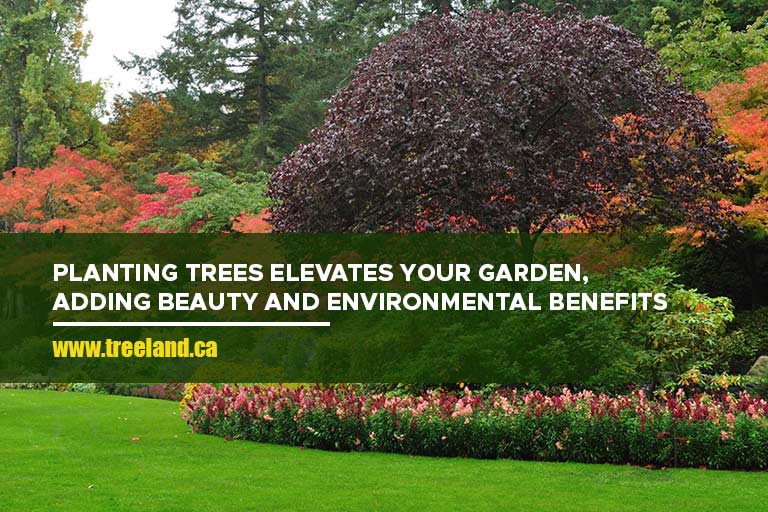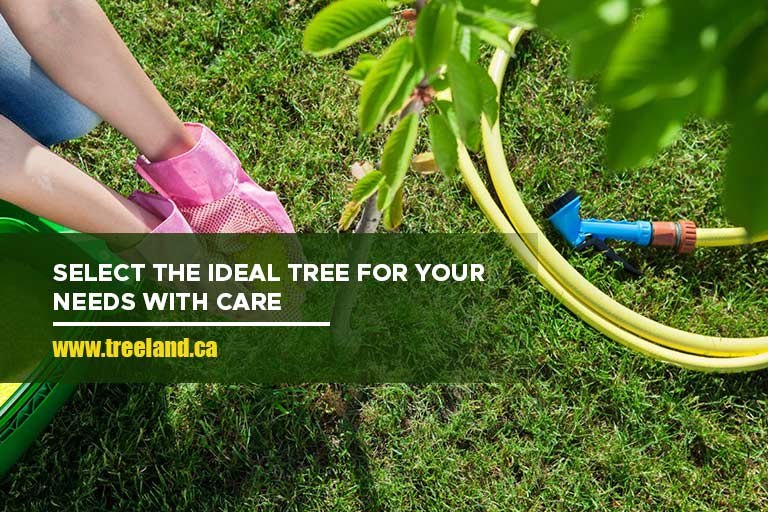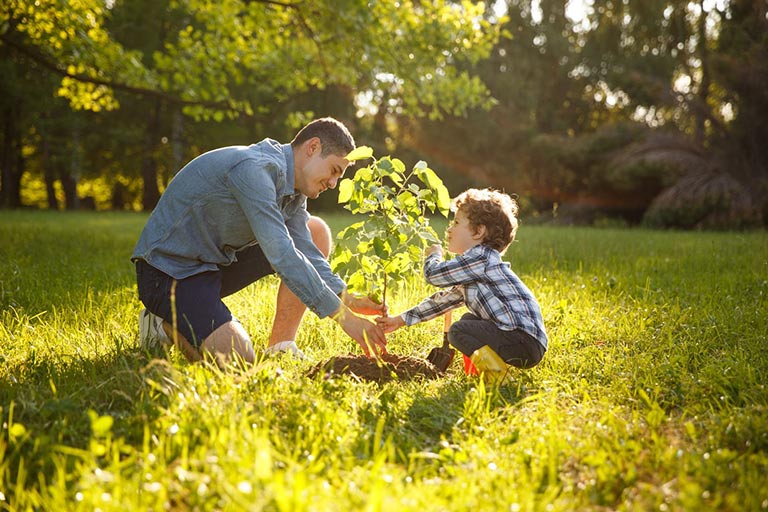In Brampton, trees play a crucial role in enhancing the beauty of residential areas, providing shade, and improving air quality. For first-time tree buyers, selecting and planting the right tree can seem like a daunting task. However, with the right guidance, it can be a rewarding experience that adds value to your property and benefits the environment.
In this guide, we’ll delve into essential tips for first-time tree buyers in Brampton to ensure successful tree planting and growth.
Selecting the Right Tree

Choosing the perfect tree for your Brampton property is vital, shaping its beauty, eco-value, and upkeep needs for years to come. With Brampton’s unique climate and soil conditions, choosing the perfect tree requires careful consideration of various factors, from hardiness and size to sunlight and soil preferences.
Factors to Consider
- Climate and Hardiness Zone
Brampton falls within hardiness zone 6a, meaning trees selected should be able to withstand cold winters and occasional extreme weather events typical of the area.
- Soil Type and Drainage
Brampton’s soil ranges from clayey to loamy, with varying drainage capacities. Understanding your soil type helps in selecting trees that will thrive in your specific conditions.
- Available Space and Sunlight Exposure
Consider the mature size of the tree and ensure it has enough space to grow without interfering with structures or other plants. Also, assess the sunlight exposure in your yard to match the tree’s sunlight requirements.
Recommended Tree Species for Brampton
- Sugar Maple (Acer saccharum)
Known for its vibrant fall foliage and tolerance to urban conditions, the Sugar Maple is an iconic tree in Brampton and thrives in its climate and soil.
- Serviceberry (Amelanchier spp.)
This native tree offers beautiful spring flowers and edible berries that attract wildlife, and adapts well to various soil types found in Brampton.
- Eastern White Cedar (Thuja occidentalis)
With its year-round greenery and ability to tolerate both sun and shade, the Eastern White Cedar is an excellent choice for privacy screens and windbreaks in Brampton.
Planning the Planting Location
Assessing the Site
- Check for Underground Utilities
Before digging, contact your local utility companies to locate any underground cables or pipes to avoid damage during planting.
- Evaluate Potential Obstructions
Identify overhead wires, buildings, or other structures that may limit the tree’s growth and adjust the planting location accordingly.
- Ensure Proper Spacing
Plant trees at a distance from other trees and structures based on their mature size to prevent overcrowding and competition for resources.
Sunlight Requirements
- Determine the sunlight needs of your chosen tree species. Some trees, like the Sugar Maple, require full sun for optimal growth and flowering, while others, like the Serviceberry, can tolerate partial shade.
- Choose a location that provides the appropriate amount of sunlight for your tree’s needs throughout the day, considering factors such as shade from nearby buildings or trees.
Preparing for Planting
Soil Preparation
- Test Soil pH and Nutrient Levels
Conduct a soil test to determine the pH level and nutrient content of your soil. Adjustments can be made by adding lime to raise pH or sulfur to lower it, along with appropriate fertilizers to ensure the soil provides essential nutrients for tree growth.
- Amend Soil as Needed
Improve soil structure and fertility by incorporating organic matter such as compost, well-rotted manure, or peat moss into the planting area.
Digging the Planting Hole
- Determine the Proper Dimensions and Depth for the Planting Hole
As a general rule, the planting hole should be at least twice as wide as the root ball and slightly shallower to encourage root growth. A wide planting hole allows roots to spread out easily, promoting stability and nutrient uptake.
- Use Proper Digging Techniques
Dig the hole with straight sides to prevent root circling and compacting the soil at the bottom. Loosen the soil in the planting hole to create a welcoming environment for the roots to grow into.
Planting the Tree

Handling and Transporting
- Handle the Tree with Care
Avoid lifting the tree by its trunk or branches to prevent damage. Instead, lift it by the root ball or container, supporting the bottom to keep the roots intact.
- Transport the Tree Securely
Wrap the root ball in burlap or place it in a container to protect it during transportation. Secure the tree in your vehicle to prevent it from shifting or falling over, which could damage the roots or branches.
Planting Techniques
- Remove the Tree from Its Container or Burlap
Carefully remove any packaging around the root ball, taking care not to disturb the roots. Gently tease out any circling roots to encourage outward growth.
- Position the Tree in the Planting Hole
Set the tree in the center of the hole, ensuring that the root flare (where the roots meet the trunk) sits slightly above the surrounding soil level. This prevents the tree from sinking too deep after planting.
- Backfill the Hole with Soil
After placing the tree, refill the hole with the removed soil, gently compacting it to eliminate air pockets and offer stability. Then, water generously to ensure soil settlement around the roots.
Watering and Mulching
- Water the Tree Thoroughly After Planting
Immediately after planting, give the tree a deep watering to saturate the root ball and surrounding soil. Continue to water regularly, especially during dry periods, to establish the tree’s root system.
- Apply Mulch Around the Base of the Tree
Spread a layer of organic mulch, such as wood chips or shredded bark, around the base of the tree to conserve moisture, suppress weeds, and regulate soil temperature. Leave a gap between the mulch and the trunk to prevent moisture-related diseases.
Aftercare and Maintenance
Watering Schedule
- Establish a Watering Schedule
Newly planted trees require regular watering to establish a healthy root system. Water deeply and infrequently, allowing the soil to dry out slightly between waterings to prevent waterlogged conditions.
- Monitor Soil Moisture
Check the soil moisture level regularly by inserting your finger into the soil near the root ball. If the soil feels dry to the touch, it’s time to water. Adjust watering frequency based on weather conditions and soil moisture levels.
Pruning and Shaping
- Prune the Tree as Needed
Remove any dead, damaged, or crossing branches to promote healthy growth and structural integrity. Pruning should be done during the dormant season to minimize stress on the tree and encourage rapid healing.
- Shape the Tree
Train young trees by selectively pruning to encourage a strong central leader and well-spaced branches. Proper shaping helps maintain a balanced canopy and reduces the risk of branch breakage in mature trees.
Pest and Disease Management
- Monitor for Pests and Diseases
Regularly inspect your trees for signs of insect infestation, fungal diseases, or other issues. Look for abnormal leaf discoloration, pest activity, or unusual growth patterns that may indicate a problem.
- Take Preventive Measures
Keep the area around the tree clean and free of debris to discourage pests and diseases. Consider using organic pest control methods or applying horticultural oils to manage common pests like aphids or scales.
Planting trees in Brampton is a fulfilling endeavour that brings numerous benefits to homeowners and the environment alike. By following these essential tips for selecting, planting, and caring for your trees, you can ensure their successful growth and longevity. If you’re ready to enhance your property with beautiful trees for sale in Brampton, contact us at Caledon Treeland at 905-880-1828. Let’s work together to create a greener, more vibrant community for future generations.

